Before we begin, let me just say I did try to write this as one post, and there’s just simply too much information. So we’re starting with an intro, then the next post will be mostly focused on Cards, because artists love doing card decks! (I mentioned on Facebook that I was thinking of doing a Tarot for Artists post and I was overwhelmed with the response.) So in the next post we’ll be breaking down the different kinds of decks, and which might work best for you to illustrate, then delving deep into the symbolism of Tarot specifically, because it is far and away the most popular for artists to take on. And we’ll talk a bit about why there can never be too many Tarot decks, and why all kinds of divination decks are so popular. And then in later parts we’ll keep going onto other magics that lend themselves well to artists, like Chaos Magic. Stay tuned!
But first…
I want to talk about why I want to do a series on magic at all. First of all, we’re on a blog for Science Fiction and Fantasy artists, and we illustrate magic all the time. We should know a little history, because it’s such a deep resource for imagery to incorporate into your next piece. Second, magic is a big seller. And if you haven’t noticed, it’s been shedding it’s oft-ridiculed new-age look. Decks like The Wild Unknown, sites like Labyrinthos, books like Basic Witches, and stores like Hauswitch are reinventing the dated (yes, I said it) quasi-religious vaguely “inspirational” symbolism that we’ve long associated with magical things. (Or “magickal” things, if you must.) And the market is wildly popular. As fantasy artists, we should be on top of any trends in magic. (And Magic, but that’s another topic.) Third, magic is a tool you can use — are actually probably using already without realizing it — to be a more productive and more creative artist.
We’re going to get into decks and books and more examples in the next post. For now, I want to talk about some magical theory.
I want to say, right now, that I am dealing with magic in a non-religious sense. However, there are people that use magic in religious rituals and for deeply spiritual uses. Regardless of what your beliefs are on the topic, you can use magic as a creativity tool and make art inspired by magic. But be aware when doing it that some people might not appreciate you using their religion in a nonreligious way, just like you’d want to be careful of using any religious iconography. I have respect for my pagan friends and hopefully I won’t be treading on any toes. We’re going to be sticking to magic as a tool for accessing our subconscious. All the effects are dealing with using nonverbal language to talk to the most primal irrational part of your brain — which is the source of our inspiration as artists. And to paraphrase a few different science fiction writers: Magic is just science we don’t understand yet.
You may recall a few posts by different contributors on this site about Joseph Campbell and his theory of the Hero’s Journey from his book The Hero with a Thousand Faces. Seriously, a ton of us have written about it. go refresh:
• The Artist As Hero
• Artist of the Month: Joseph Campbell
• And for good measure, here’s a post I wrote on another site specifically on Campbell’s essay on the Artist as Hero with some of my crazy notes from my sketchbook on it:
Back? Ok. So now you know the Hero going into the Underworld and bringing back a Treasure for Mankind is a metaphor for the Artist going deep into their Subconscious and bringing back Understanding for Mankind.
The definition of an artist is someone who taps into their subconscious, and further into the greater collective unconscious of the entire culture. The collective unconscious is where our shared archetypes and symbolism live. We tap into that and filter it through our personal subconscious and it comes out as works of art. People then see (or hear, or experience) those artworks and gain a greater understanding of the culture and themselves.
And just a side-note. People tend to use the terms subconscious and unconscious pretty interchangeably, but I stick to subconscious for the nonverbal dream side of our brains and unconscious for either being actually passed out or when referring to Jung’s term collective unconscious, because that’s what he called it.
But the subconscious is a tricky thing to tap into. That part of our brain doesn’t respond to language or logic or rationality. Our dreams are the clearest window we get into the subconscious…and we all know how irrational dreams can be. The subconscious works with pure sensory input. You can’t talk to it, you have to access it through vision and hearing and touch and smell and taste. And then our subconscious doesn’t talk back rationally either. It’s not controllable. All we can do is come at it sideways, and wait for something to bubble across the barrier into our conscious mind. That’s where the “lightbulb” moment happens. Something that’s been stewing in our subconscious for awhile finally makes it across to our conscious mind and it feels like a bolt of inspiration. And those lightbulb moments always happen when we’re not trying to force it. The cliché about taking showers, going to long walks, practicing an instrument to make inspiration hit are all true. The trick is making the conscious mind as relaxed and in tune with the subconscious mind as possible. And here’s a list of methods to do that:
Going for walks (Darwin’s preferred method)
Playing the violin (Einstein)
Meditation
Prayer
Hypnosis
Yoga
Chanting/Singing
Driving
Taking a shower
Lucid dreaming
Sex
Dance
Free writing/automatic writing
Free association with images
Now free association with images is the rich one we’re going to mostly get into with this Magic for Artists series (because we’re a visual art site — feel free to chant and dance if that’s your thing). The classic psychology tool for free association with images is a Rohrschach test. But in ancient times it wasn’t called free association, it was called Diviniation (“messages from the divine”) and it was practiced with everything from tea leaves to runes to decks of cards to animal entrails. The visual stimuli goes straight back through your conscious mind into your subconscious, and it starts a chain reaction in all the half-formed nonverbalized thoughts back there and it all forms a pattern and your subconscious spits it out across the barrier into your conscious mind. The divination tool is just the catalyst for the thoughts already in your subconscious. But it feels like the thoughts are coming from outside yourself and being zapped into your mind by magic. In later posts, we’ll also tackle Sigil Magic, which is a visual tool for reversing the process and sending info from the conscious to the subconscious…but let’s stick to bringing things out of the subconscious for now.
So our goal as artists is to weaken the barrier between conscious and subconscious as much as possible, so more inspiration can get out and we can make more art. Explore as many of the tools listed (and others you can think of) and see what works best for you. Practicing with a few of the tools over time is going to make the process much easier, and your conscious and subconscious will sync more easily as your practice becomes habit.
Now here’s where we complete that Venn diagram from above. We like to think of the entire creative process as magic, but in reality it’s a process that has defined stages and can be trained. Every one of us knows what it’s like to fall into the “zone” or get into the “flow” when you’re working on something — it’s that state of total focus on our work when everything feels in sync and effortless. I read a fantastic book called Flow: The Psychology of Optimal Experience by Mihaly Csikszentmihalyi and it’s all about understanding this state and learning to bring it on more reliably when we want it. Yes, of course there’s more posts and book notes for you!
One of the ways that we achieve this flow state is by using rituals. Forming habits and behaviors that get you primed and in the mood to create. The flow state is an altered state of mind, in effect a kind of trance. It’s a hyper focus where time loses it’s grip on us, it may speed up or slow down. Sometimes it feels like a delicate state — and it’s very precious to artists. Proust created a cork-lined room to write in so he wouldn’t be distracted by noise and lose his flow. Pro athletes are famous for their pre-game rituals and preparations and good luck charms. Some have certain songs they play, some light candles, some exercise or stretch a very specific way. Some refuse to wash an item of clothing or cut their hair when they’re on a winning streak. This is exactly the same concept as drawing a chalk or salt circle around yourself, lighting incense, having crystals or statues displayed, or wearing specific clothes — all things commonly seen in magical ritual. The very concept of creating a ritual for yourself acts as a shortcut to enticing the Muse to visit you reliably and stay put while you’re working.
Free association with divination tools is also a fantastic way to break through creative blocks. It gives you unexpected stimuli that sparks things in your mind that you wouldn’t have thought of consciously.
All kinds of artists can benefit from looking at magic for methods of being more creative and more reliably productive…but it seems like an even smaller leap to make for artists that paint magic all the time to start using it to help create that work.
Next post: we move on to Tarot (and other Decks) for Artists! And here’s a little teaser from Moriah Simmons, who gives a great Tarot for Creativity class I took recently (and we’ll talk more about next post)
“Tarot and creativity are a natural pairing because they both tap into the deeper knowing beyond the logical mind. I developed my Tarot for Creativity class because many of my tarot clients are artists or work in creative problem-solving, and they felt creatively blocked. And that was something I had faced, too. My personal tarot practice helped me access my creative energy. I’d feel blocked, pull a card, and the images would show me a totally perfect but unexpected solution that my logical mind hadn’t worked out. So I wanted to share the practice I developed because it really is effective and accessible without extensive tarot study.” —Moriah Simmons
SaveSave


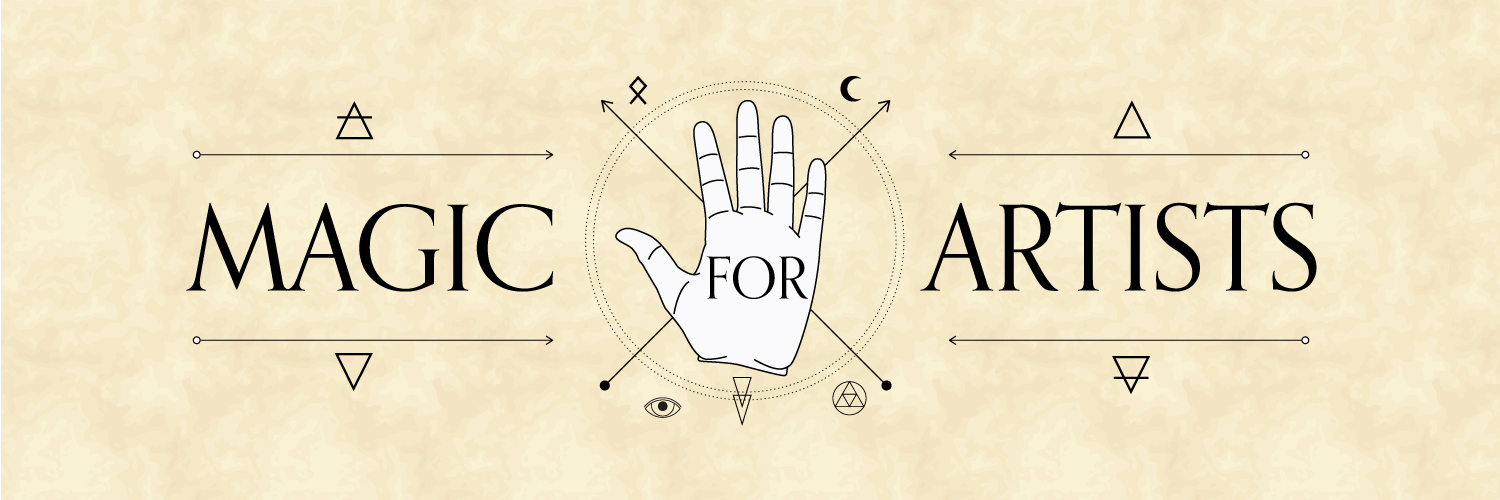
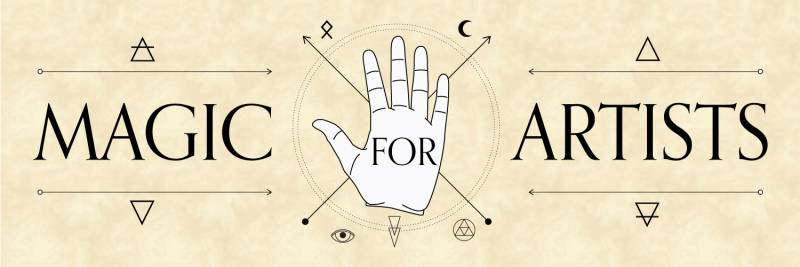

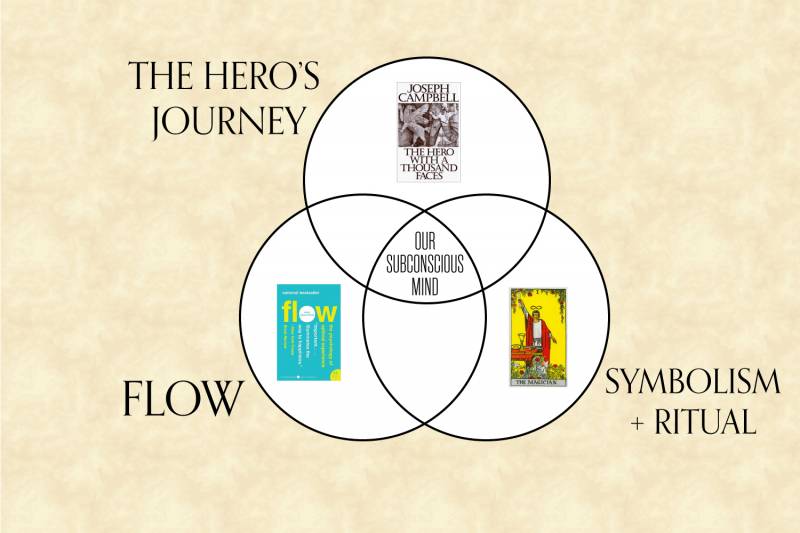
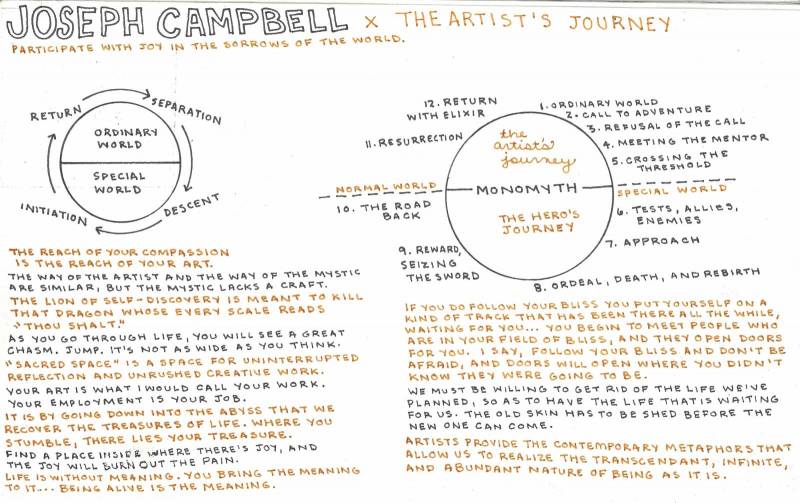



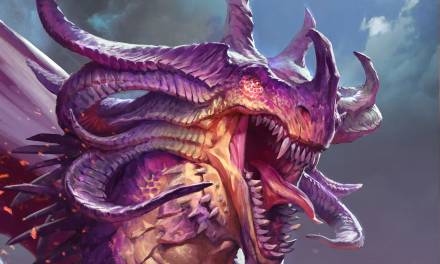

Amazing post! At such a relevant time in my life as well. Coincidence? Or… magick?
Clearly we are riding the same waves of the collective unconscious. All kidding aside, it’s something that’s been bubbling up into pop culture more and more, but in an interesting way, with the woo-woo, hippy, and religious connotations stripped back a bit. I got into magic/k sideways, through psychology reading (Jung, Campbell, Rank) and if you listen to Jung, there’s no such thing as coincidence, just synchronicity…
The synchronicity of this post and this conversation and the path of getting into it all through psychology and exploring consciousness is so fascinating. It’s wild to think about. Again, thank you for the wonderful article and I can’t wait for the next one!
(currently searching for an artist-made tarot deck that I can experiment with)
The bootcamp Q&A got me to start digging through your muddy color posts, and I am so glad I fell down this rabbit hole.
Magic has been increasingly on my mind. I use it a lot in both a spiritual way and a creative way (not convinced there is a difference, but anyway). I have also been trying to articulate my way of seeing magic to people I know, and damn if this post isn’t spot on!
This is also timely because I am starting the adventure of drawing a tarot deck. My intuition and my friends have been yelling at me to make a card deck for years. I always shrugged it off because there are so many card decks already, but I came to realize in the last three days, that I am making the deck for myself. It is my own journey in learning and understanding. It is something I can be meticulously selfish with, but the funny thing is, all that time I devote to learning will actually be impactful and important to people beyond myself. I am seeing the effects already from the scribbles I have been putting up on instagram.
So, thank you for writing this Lauren!
Great to hear, Bronwyn! Guess what, Part 2: Tarot (and other decks) for Artists is up next!